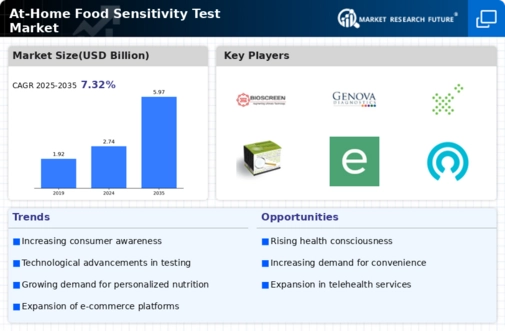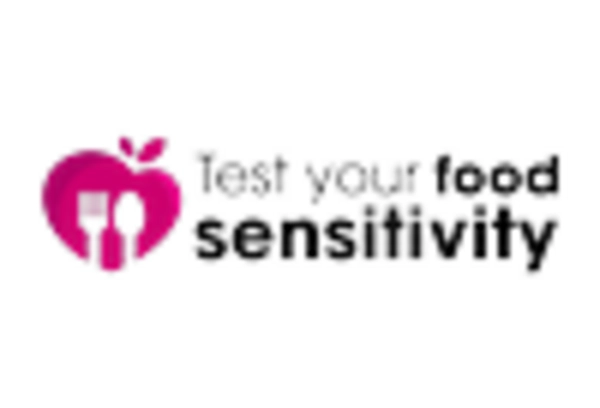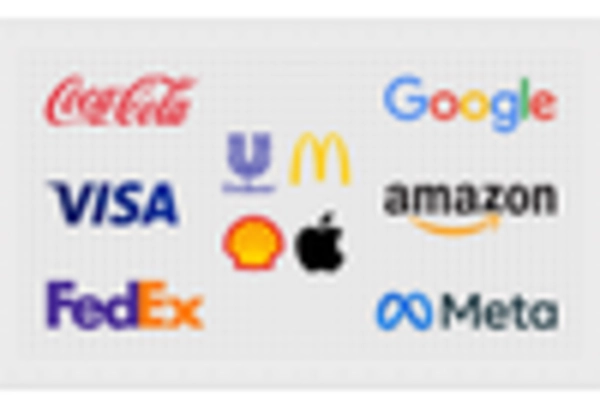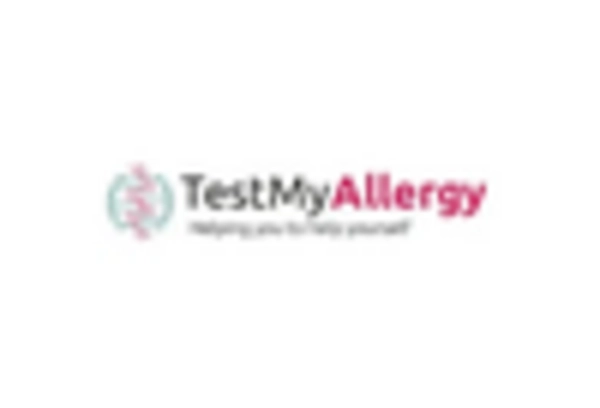The At-Home Food Sensitivity Test Market is currently characterized by a dynamic competitive landscape, driven by increasing consumer awareness regarding food sensitivities and the growing demand for personalized health solutions. Key players such as Everlywell (US), ImuPro (DE), and Test My Allergy (GB) are strategically positioning themselves through innovation and digital transformation. Everlywell (US) has focused on expanding its product offerings, while ImuPro (DE) emphasizes scientific validation in its testing processes. Test My Allergy (GB) is leveraging partnerships with healthcare professionals to enhance credibility and reach. Collectively, these strategies contribute to a competitive environment that is increasingly focused on consumer education and trust in test results.
In terms of business tactics, companies are localizing manufacturing and optimizing supply chains to enhance efficiency and reduce costs. The market appears moderately fragmented, with several players vying for market share. This fragmentation allows for niche players to thrive, while larger companies leverage their resources to dominate key segments. The collective influence of these key players shapes the market structure, fostering an environment where innovation and customer-centric approaches are paramount.
In August 2025, Everlywell (US) launched a new line of food sensitivity tests that utilize advanced AI algorithms to provide personalized dietary recommendations. This strategic move not only enhances the user experience but also positions the company at the forefront of technological integration in health testing. By incorporating AI, Everlywell (US) aims to differentiate itself in a crowded market, potentially attracting a tech-savvy consumer base seeking tailored health solutions.
In September 2025, ImuPro (DE) announced a partnership with a leading health technology firm to develop a mobile application that tracks food intake and correlates it with sensitivity test results. This initiative underscores ImuPro's commitment to integrating technology into its offerings, thereby enhancing user engagement and providing a comprehensive approach to managing food sensitivities. Such partnerships may prove crucial in establishing a competitive edge in an increasingly digital marketplace.
In July 2025, Test My Allergy (GB) expanded its operations into several European markets, capitalizing on the rising demand for at-home testing solutions. This expansion reflects a strategic focus on regional growth and the potential to tap into new customer segments. By establishing a presence in these markets, Test My Allergy (GB) is likely to enhance its brand visibility and market share, further intensifying competition in the sector.
As of October 2025, current trends in the At-Home Food Sensitivity Test Market indicate a strong emphasis on digitalization, sustainability, and the integration of artificial intelligence. Strategic alliances are increasingly shaping the competitive landscape, allowing companies to pool resources and expertise. Looking ahead, it appears that competitive differentiation will evolve from traditional price-based competition to a focus on innovation, technological advancements, and supply chain reliability. This shift may redefine how companies engage with consumers, ultimately fostering a more informed and health-conscious market.


















Leave a Comment